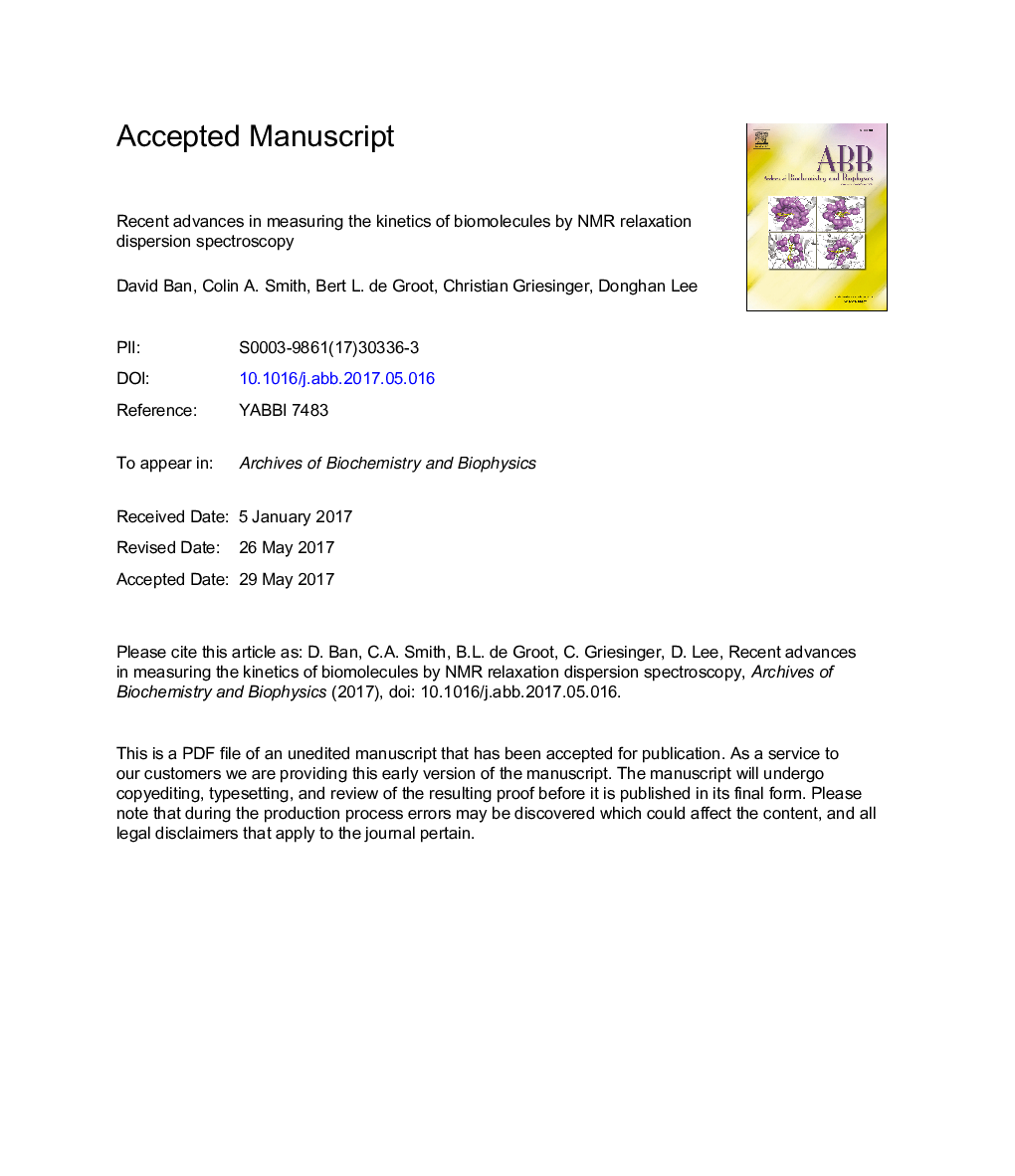| Article ID | Journal | Published Year | Pages | File Type |
|---|---|---|---|---|
| 5504335 | Archives of Biochemistry and Biophysics | 2017 | 42 Pages |
Abstract
Protein function can be modulated or dictated by the amplitude and timescale of biomolecular motion, therefore it is imperative to study protein dynamics. Nuclear Magnetic Resonance (NMR) spectroscopy is a powerful technique capable of studying timescales of motion that range from those faster than molecular reorientation on the picosecond timescale to those that occur in real-time. Across this entire regime, NMR observables can report on the amplitude of atomic motion, and the kinetics of atomic motion can be ascertained with a wide variety of experimental techniques from real-time to milliseconds and several nanoseconds to picoseconds. Still a four orders of magnitude window between several nanoseconds and tens of microseconds has remained elusive. Here, we highlight new relaxation dispersion NMR techniques that serve to cover this “hidden-time” window up to hundreds of nanoseconds that achieve atomic resolution while studying the molecule under physiological conditions.
Keywords
Related Topics
Life Sciences
Biochemistry, Genetics and Molecular Biology
Biochemistry
Authors
David Ban, Colin A. Smith, Bert L. de Groot, Christian Griesinger, Donghan Lee,
